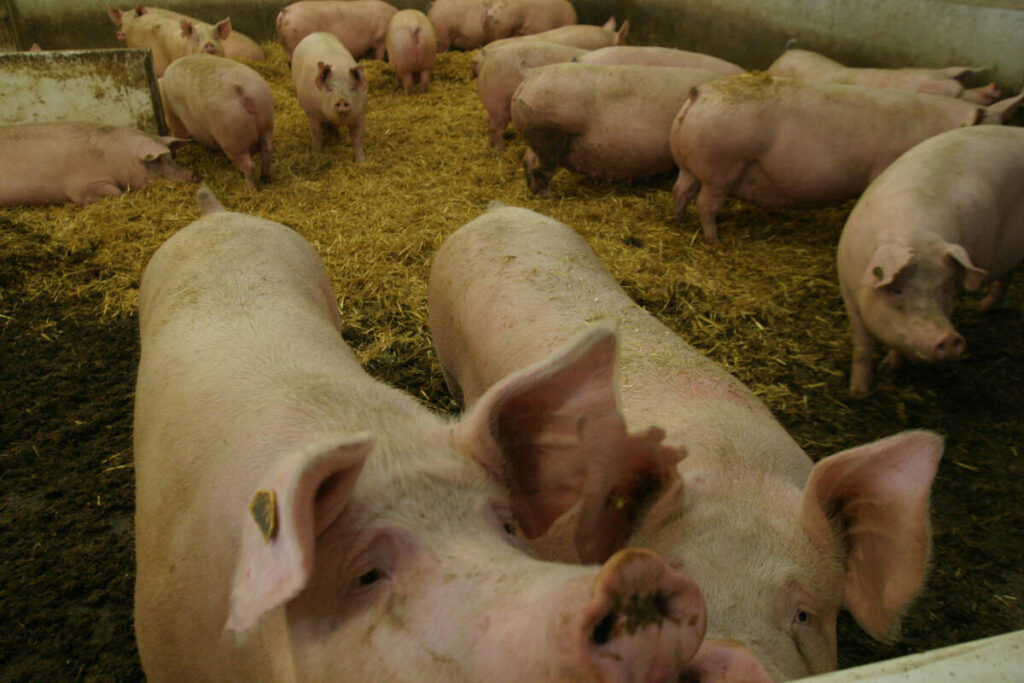Farrowing sow medications receive closer look

When Dr. Lexie Reed of Sunny South Veterinary Services examined studies on several farrowing sow medications, including prostaglandins, oxytocin, carbetocin, meloxicam and dexamethson, she found that many variables determine which medication is the best choice for a specific circumstance.
“If you had questions or concerns specific to how you’re using the product we have talked about, you might want to review how you are using it, when in farrowing you are using it and what doses you are using. Discuss it with your veterinarian. With record-keeping systems now, it’s pretty easy to be able to do small in-farm trials where we change our protocols,” Reed told a recent producer meeting in Lethbridge.
Approximately 40 per cent of pre-weaning mortality occurs at birth or during the first day. Of those, 60 per cent of the mortalities are associated with the farrowing process directly.
Read Also


Test for parasites in cattle herd to avoid over-medication
The old days of treating everything in the fall with an ivermectin type (Macrocyclic lactone) product year after year and always expecting excellent results are perhaps going away.
With larger litter sizes comes longer farrowing times with a corresponding greater chance of stillborns. Piglet movement, such as fostering and split suckling, can help, along with better nutrition for the marathon of farrowing, farrowing assistance and pharmaceuticals.
“The timing of induction really matters. If you make a pig farrow earlier than 112 days of gestation, then you are not going to have a good outcome. The piglets are going to be premature,” said Reed.
“The most common use (of prostaglandins) is 24 to 32 hours before the farrowing date. That’s usually around Day 114 because most people’s average farrowing length is around 115 days.”
Farmers use one- or two-dose protocols, and some also use oxytocin 24 hours after induction. A two-dose protocol has shown an increased percentage of sows that farrow between 24 to 32 hours after induction. The two doses are in six-hour intervals.
Inducing during working hours allows for more management with a possible increase in IgG content (antibodies of sows to protect piglet) of colostrum.
Negative effects are possibly lower weaning weight, decreased viability of piglets, percentage of fat content in colostrum and milk (reducing energy for piglets for growth) and a possible decrease in IgG content.
“We looked at meta analysis in reviews of recent information. It’s not looking at just one study, it’s looking at 18 to 24 studies. This particular meta analysis was done in 2021, so it’s looking at more recent studies,” said Reed.
She added there was no consistent effect on born alives, mummies, stillborns, piglet mortality, litter average daily gain, litters receiving medical intervention and sows in estrus by seven days after weaning.
“Do prostaglandins work? They work really well, they make the sow farrow 24 to 32 hours after she is induced. Will they reduce stillborns or mortality? That depends on your management,” she said.
Reed said pregnant women, women of childbearing age, asthmatics and others with respiratory tract diseases should use utmost care when administering prostaglandins and advised using waterproof gloves.
The medication can be readily absorbed through the skin, causing abortions, interfere with the reproductive cycle and cause constrictions in the lungs.
As well, accidental self injection of oxytocin and carbetocin can cause extreme uterine cramping in women or spasming of the coronary artery, which can increase blood pressure.
“Even if it comes in contact with the skin, say a bottle breaks, then that is something we should be washing off immediately with water, even if we are wearing gloves.” said Reed.
Oxytocin is a hormone that is naturally produced in the body. It’s used during dystocia when things go wrong for a sow that is taking too long to farrow.
It causes stronger contractions of the smooth muscle layer in the uterus to reduce stillbirths by decreasing farrowing time and expelling the piglet. However, some studies have shown it increases stillborns. Another negative is it can increase the need for farrowing assistance by 137 per cent compared to sows that don’t receive the hormone.
“If we give it early in the farrowing process, we have an increased number of piglets who are born with ruptured umbilical chords because strong uterine contractions can cause disruption in blood flow to the placenta. It can also cause physical disruption to that attachment,” said Reed, adding there can also be severe meconium staining, excessively low heart rates and taking longer than a minute to breath and five minutes to stand.
Negative effects from the studies were shown to be mitigated by dose and timing.
They were seen in doses from 0.25 to one millilitre and when the medication was administered before the eighth piglet. Problems also occurred when it is given to the all sows and not just those with dystocia compared to normal farrowing.
The sweet spot for dosages was between 0.25 and 0.5 mL, only in dystocic sows and after the birth of the eighth piglet.
The use of carbetocin has gained traction in the last couple of years as an oxytocin analogue because it is not produced naturally in the body. The effects are not as strong but are longer lasting with a half life of 41 minutes. Negative effects are similar to oxytocin, with more positive effects from smaller doses compared to 0.7 to 2.1 mL.
“When we compare a product that has a lower contraction effect compared to a product that has a higher contraction effect, then it’s probably better to be using the one that has less contractions,” Reed said.


She said these studies also showed decreased umbilical cord blood lactate, a byproduct of exertion, which suggests those pigs experience less metabolic stress.
Comparing the benefits of oxytocin and carbetocin, Reed said it depends on how the farmer is using it. If a producer uses large doses of oxytocin early on in the farrowing process, they’re likely better off using carbetocin due to the lower stress over the longer time period with the strength of contractions.
Meloxicam and dexamethsone are anti-inflammatories used for pain management for farrowing sows.
A study that looked at an active farrowing stage with doses of either oral or injectable at 0.4 mL found that meloxicam showed increased colostrum immunoglobulins, improved cellular/humoral immune response in piglets and increased ADG in smaller birth weight piglets.
Dexamethsone is a steroidal anti-inflammatory, aligning with the stress hormones in the human body. It is very potent, but negative side effects showed up in the study if used before the day of farrowing as opposed to the day of, including decreased piglet wean weights and decreased colostrum consumption/quality.
If used on the day of farrowing, it was found to increase wean weight in piglets born to gilts.
Reed said the findings on prostaglandins, oxytocin and carbetocin were compiled over 18 to 24 studies while meloxicam and dexamethsone were over only a single study.
“These are areas we need a lot more work before we are confident on the benefits and the economic benefits along with the negatives,” said Reed.
“This is something in 10 years we will hopefully have a lot more information on.”
Source: producer.com


